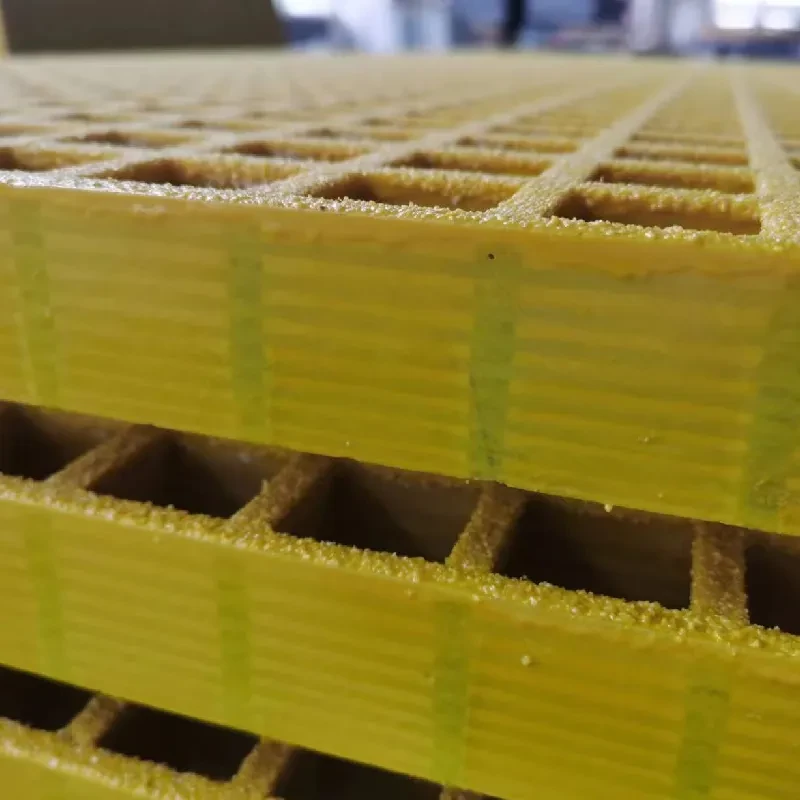loading...
- No. 9, Xingyuan South Street, Dongwaihuan Road, Zaoqiang County, Hengshui, Hebei, China
- admin@zjcomposites.com
- +86 15097380338
- Welcome to visit our website!
Techniques for Cutting Fiberglass Reinforced Plastic Grating Efficiently and Safely
Understanding the Cutting of FRP Grating Benefits and Techniques
Fiber Reinforced Polymer (FRP) grating has gained significant popularity across various industries due to its unique combination of strength, lightweight characteristics, and resistance to corrosion. It is widely used in environments where traditional materials, like steel or wood, may fail due to harsh conditions or chemical exposure. One of the critical aspects of utilizing FRP grating is the cutting process, which allows for precise fitting and installation in various applications. This article explores the importance of cutting FRP grating, the methods used, and the benefits of employing this versatile material in industrial settings.
What is FRP Grating?
FRP grating is a composite material made from a polymer matrix reinforced with glass or carbon fibers. This combination results in a product that is not only lightweight but also exhibits remarkable strength and durability. FRP grating finds applications in platforms, walkways, and stair treads, especially in industries such as chemical processing, wastewater treatment, and food production where material integrity is paramount.
The Importance of Proper Cutting Techniques
Cutting FRP grating correctly is essential to ensure safety, functionality, and performance in its intended applications. Improper cutting can lead to compromised structural integrity and can introduce sharp edges that pose safety risks. Moreover, ill-fitted grating may not align correctly with existing structures, which can lead to costly delays or replacements. Therefore, understanding the proper cutting methods and equipment is crucial for anyone working with FRP grating.
Methods of Cutting FRP Grating
There are several techniques for cutting FRP grating, each with its advantages depending on the specific requirements of the project
1. Saw Cutting This is the most common method for cutting FRP grating. A circular saw or jigsaw equipped with a suitable blade can efficiently handle the material. It's essential to use blades specifically designed for composites to prevent excessive friction, overheating, or chipping of the grating.
cutting frp grating

2. Water Jet Cutting This technique employs a high-pressure jet of water mixed with abrasive particles to cut through FRP. Water jet cutting is advantageous as it generates minimal heat, which helps maintain the integrity of the material and provides highly accurate cuts. This method is particularly useful for complex shapes or detailed cutouts.
3. CNC Machining For projects requiring specialized designs or repeated cutting patterns, computer numerical control (CNC) machining offers unparalleled precision. CNC machines can be programmed to make intricate cuts, reducing the risk of human error. However, this method may require a higher initial investment in equipment.
4. Hand Tools For smaller projects or one-off cuts, hand tools like hacksaws can be used effectively, although they may require more manual labor and precision. Proper handling and techniques are essential to avoid damage and ensure a clean cut.
Safety Considerations
When cutting FRP grating, it's essential to adhere to safety protocols. The cutting process can create dust and small particles that may be harmful if inhaled. Therefore, wearing appropriate personal protective equipment (PPE), such as dust masks, goggles, and gloves, is crucial. Additionally, ensuring a clean workspace can help mitigate risks associated with cut materials and tools.
Advantages of FRP Grating
Selecting FRP grating for industrial applications offers numerous benefits beyond ease of installation and cutting. Its high resistance to corrosion extends the lifespan of structures, reducing maintenance costs over time. Furthermore, its lightweight nature eases transportation and reduces the load on supporting structures. This sustainability aspect aligns with modern environmental goals, promoting the use of durable, low-maintenance materials.
Conclusion
In conclusion, the cutting of FRP grating is a vital process that enhances its usability in various industrial applications. Understanding the cutting techniques and prioritizing safety measures can significantly impact the overall effectiveness and longevity of the installations. With its numerous advantages, FRP grating continues to be a favored choice, paving the way for innovative applications across multiple sectors. Whether through saw cutting, water jet cutting, or CNC machining, the ability to tailor FRP grating to meet specific project needs confirms its place as a leading solution in today's material landscape.
-
Transform Your Spaces with FRP Grating SolutionsNewsNov.04,2024
-
The Versatility and Strength of FRP RodsNewsNov.04,2024
-
The Excellence of Fiberglass Water TanksNewsNov.04,2024
-
The Benefits of FRP Grating for Your ProjectsNewsNov.04,2024
-
Elevate Your Efficiency with FRP Pressure VesselsNewsNov.04,2024
-
Welcome to the World of FRP Pressure VesselsNewsOct.12,2024
-
Unveiling the Future of Filtration: Why FRP Filter Vessels are a Game ChangerNewsOct.12,2024
